Could you please go into more detail about your answer?
Posts made by belaarnold27
-
What Are the Key Elements of Tourism Advertisement?posted in Announcements
-
Best Travel Ads Network for Tourism Businesses?posted in Announcements
Could you please provide a more detailed explanation of your answer?
-
Best Tips to Get Travel Traffic Online Fast?posted in Announcements
Can you share more details or examples to back up your response?
-
What Are Ways to Increase Travel Website Traffic?posted in Announcements
Can you explain the answer in a step-by-step format?
-
Which Platform Offers the Best Travel Display Ads?posted in Announcements
Is it possible for you to explain how to approach this question?
-
Top Benefits of a Travel Advertisement Network?posted in Announcements
Can You Walk Me Through the Approach to This Question?
-
Where to Advertise to Boost Your Travel Business?posted in Announcements
Would you be able to provide a clearer explanation of this answer?
-
Why Should You Use Travel Banner Ads in 2025?posted in Announcements
Would you please help me understand this response?
-
Can Travel Banner Ads Improve Brand Visibility?posted in Announcements
Can you help me understand the answer to this question?
-
How Much Does PPC Travel Management Cost?posted in Announcements
The cost of PPC travel management can vary widely based on several factors, including the size of your campaign, the competitiveness of your target keywords, your advertising platform (like Google Ads, Bing, or a travel-specific ad network), and whether you hire an agency or manage it in-house.
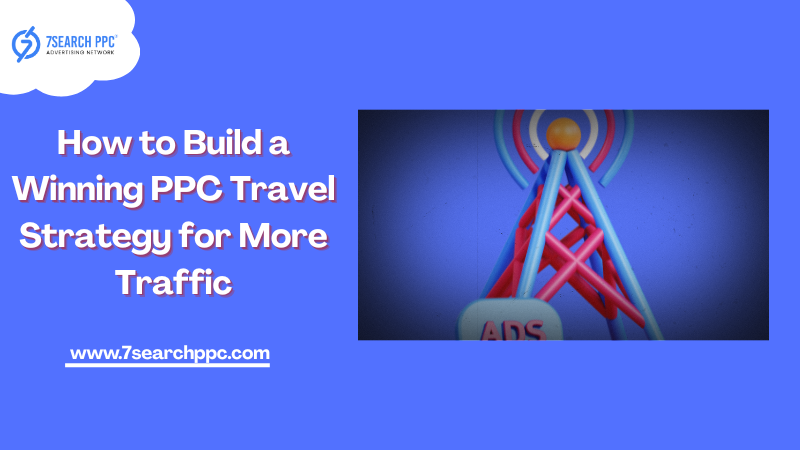
On average:
-
Ad Spend: Most travel businesses spend anywhere from $500 to $5,000+ per month on PPC ads, depending on their goals and competition level.
-
Management Fees: If you hire a PPC management agency, expect to pay a management fee that could range from 10% to 30% of your monthly ad spend or a flat fee between $300 and $2,000 per month.
-
Additional Costs: There may be extra costs for landing page creation, ad copywriting, or keyword research if not included in the management service.
Key Tip: It's important to balance your ad spend and management costs to ensure a strong return on investment (ROI). Always monitor performance metrics closely to optimize for bookings and leads!
-
-
Why Hire a Travel PPC Agency in 2025?posted in Announcements
Travel banner ads are a powerful way to attract attention and drive traffic to your travel-related offerings. These visually engaging ads allow businesses to showcase destinations, promotions, and travel packages in a way that instantly captures interest. Here’s why you should consider using them in your campaigns:
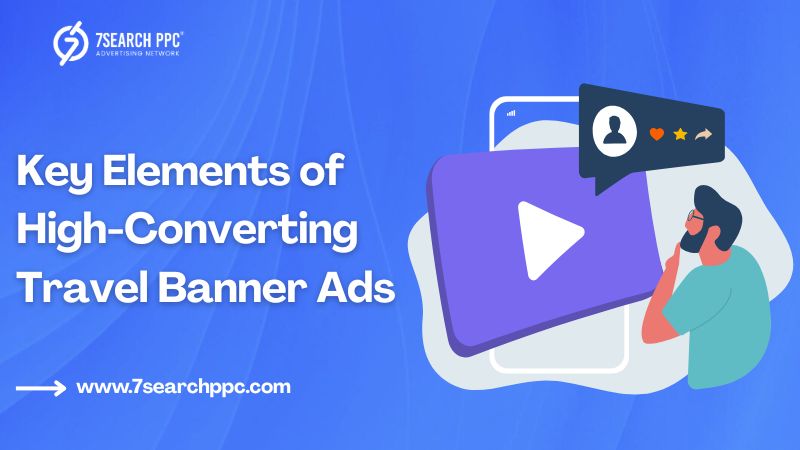
-
High Visual Impact: Travel is all about experiences and visuals. Banner ads allow you to feature stunning imagery of destinations, making your ads more appealing and memorable.
-
Targeted Reach: Travel banner ads can be strategically placed on relevant websites and platforms to reach users who are already interested in travel, increasing the chances of conversion.
-
Cost-Effective Promotion: Compared to other forms of advertising, banner ads offer a cost-effective way to promote travel deals, especially when used with a PPC (pay-per-click) model.
-
Brand Awareness: Consistently displaying your travel brand through banners helps build recognition and trust with potential travelers.
-
Drive Traffic and Bookings: When well-designed and targeted, banner ads can lead users directly to your website or booking platform, turning interest into action.
In summary, travel banner ads combine visual appeal with strategic placement to boost visibility, engagement, and conversions for your travel campaigns.
-
-
How Does Travel Advertising Attract More Tourists?posted in Announcements
Travel advertising plays a key role in attracting more tourists by creating awareness, sparking interest, and inspiring action. Here's how it works:
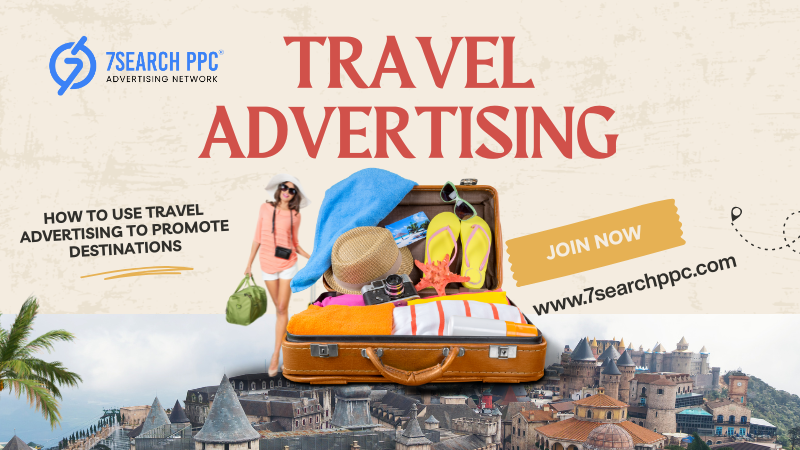
-
**Captivates Through Visual Storytelling:**Travel ads use stunning images and videos to highlight beautiful destinations, making people dream about visiting. These visuals create emotional connections and fuel wanderlust.
-
**Promotes Unique Experiences:**Ads showcase what makes a destination special—cultural events, food, adventure, or relaxation. This helps travelers find experiences that match their interests.
-
**Targets the Right Audience:**With digital platforms, travel ads can be tailored to specific age groups, locations, or travel preferences. This increases the chance of reaching people who are most likely to book a trip.
-
**Builds Brand Awareness:**Regular exposure to a destination through ads builds familiarity and trust, making tourists more likely to choose that place over others.
-
**Drives Engagement and Bookings:**Travel ads often include calls-to-action like “Book Now” or “Explore Deals,” which encourage users to take immediate steps toward planning their trip.
-
**Highlights Reviews and Testimonials:**Positive reviews and real traveler experiences included in ads boost credibility and influence decision-making.
In short, effective travel advertising turns destinations into must-visit experiences, motivating tourists to explore new places.
-
-
How to Get Started with Travel Advertising?posted in Announcements
Want to promote your travel Advertising business but don’t know where to begin? Here’s a quick guide to help you launch your first travel ad campaign the smart way
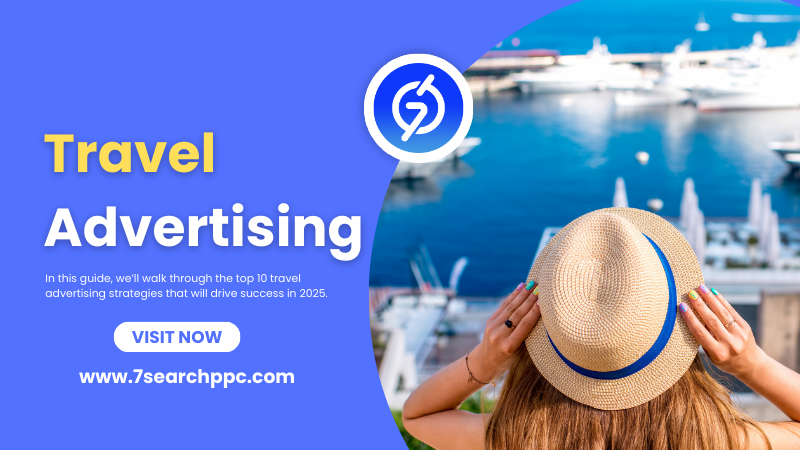
- Know Your Audience
Start by identifying who you want to reach — adventure seekers, honeymooners, budget travelers, or luxury explorers? Tailor your messaging to what they care about. - Choose the Right Platforms
Promote your ads where travelers hang out — search engines, travel blogs, YouTube, Instagram, or ad networks like 7Search PPC, built for niche targeting. - Create Eye-Catching Visuals
Travel is a visual experience. Use high-quality images or videos of your destination, tours, or packages. A beautiful ad = more clicks. - Write Compelling Copy
Highlight what makes your offer irresistible:
Special discounts
Unique experiences
Limited-time deals
Local expertise - Set a Budget That Works
You don’t need thousands to start. Platforms like 7Search PPC let you run cost-effective campaigns using CPC (cost-per-click) or CPM (cost-per-thousand impressions). - Track & Optimize
Use performance data to improve your ads. Tweak your images, change your headline, or test new audiences. Travel advertising is a game of smart adjustments. - Consider Retargeting
Don’t let visitors slip away. Retargeting ads help bring back people who viewed your site but didn’t book.
Pro Tip:
Start small, stay consistent, and always test what works. With the right strategy, your travel ads can drive traffic, bookings, and brand awareness in no time. - Know Your Audience
-
What Are the Benefits of Hiring a Travel Advertising Agency?posted in Announcements
iring a travel advertising agency offers several benefits that can help boost your business’s visibility and sales. Here are the key advantages:
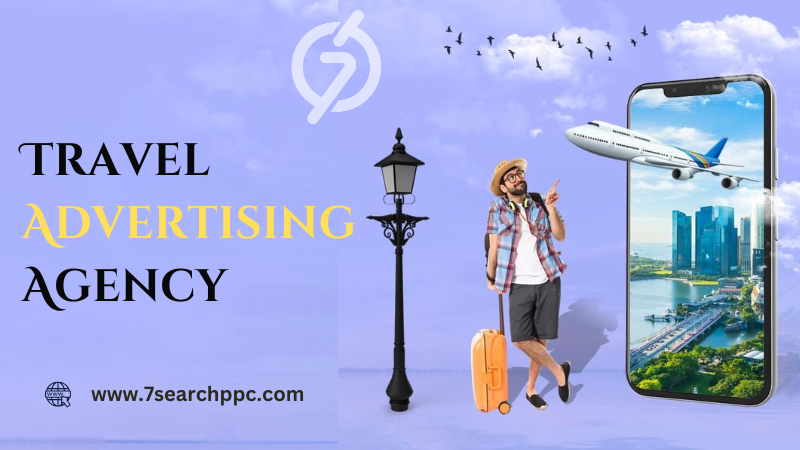
-
Expertise and Industry Knowledge – Travel advertising agencies specialize in the travel industry and are up-to-date with the latest trends, technologies, and consumer behaviors. Their expertise ensures that your campaigns are strategically aligned with the industry’s best practices.
-
Targeted Campaigns – These agencies use advanced targeting techniques, ensuring your ads reach the right audience—whether they’re leisure travelers, business travelers, or adventure seekers. This targeted approach helps maximize ad spend and increases the chances of conversions.
-
Creative and Engaging Content – Travel agencies excel at creating eye-catching ads that captivate potential travelers. Whether it's stunning visuals, compelling ad copy, or well-designed landing pages, they know how to craft content that resonates with your audience.
-
Cost-Effective Advertising – By optimizing ad campaigns, travel advertising agencies ensure that your budget is spent efficiently. They focus on reducing unnecessary costs while driving qualified leads and improving the overall return on investment (ROI).
-
Multi-Channel Marketing – Agencies have the tools and expertise to run campaigns across multiple platforms—Google Ads, social media, programmatic advertising, and more. This broad reach helps your brand gain visibility on the platforms where potential customers spend the most time.
-
Continuous Optimization – Travel agencies constantly monitor the performance of your campaigns, adjusting them to improve results. They use A/B testing, conversion tracking, and other optimization methods to ensure that every dollar spent on advertising contributes to your business goals.
-
Time-Saving – Outsourcing your travel advertising to a professional agency allows you to focus on other critical aspects of your business, such as customer service or product development, while the agency handles all aspects of your marketing.
-
Access to Advanced Tools and Technology – Travel advertising agencies often have access to sophisticated tools for tracking, reporting, and analytics. These resources provide valuable insights into your audience’s behavior, enabling better decision-making.
In summary, hiring a travel advertising agency helps streamline your marketing efforts, boosts brand visibility, and drives more qualified traffic to your business, all while optimizing your ad spend and improving ROI.
-
-
Why Is Advertisement of Tour and Travel Important?posted in Announcements
The advertisement of tour and travel plays a crucial role in attracting tourists, boosting bookings, and increasing brand awareness. Here’s why it matters:
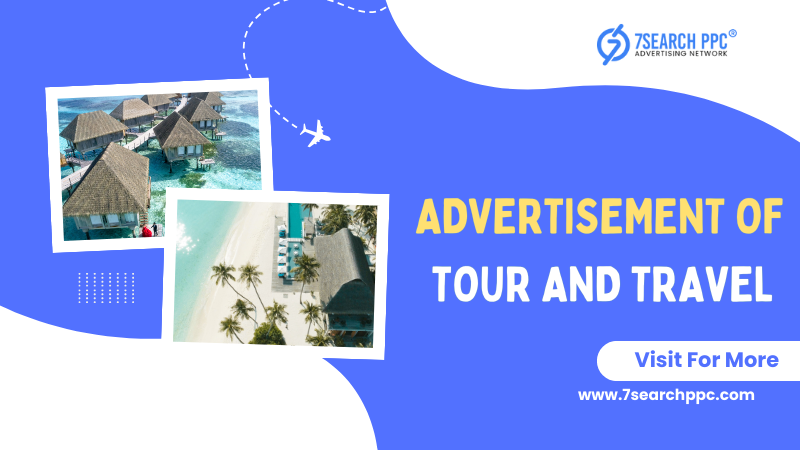
1️ Increases Visibility and Awareness
Advertising helps travel businesses reach a wider audience, making destinations, hotels, and tour packages more recognizable.
2️ Drives More Bookings and Sales
Effective travel ads encourage potential travelers to book flights, hotels, and vacation packages, increasing revenue.
3️ Targets the Right Audience
With digital ads, businesses can reach specific traveler segments based on interests, location, and travel behavior.
4️ Showcases Unique Experiences
Travel ads highlight scenic destinations, adventure activities, and cultural attractions to entice travelers.
5️ Builds Brand Trust and Credibility
Consistent and engaging travel ads establish a strong brand presence, making customers more likely to trust and choose your services.
6️ Keeps You Competitive in the Travel Industry
In a highly competitive market, advertising helps businesses stand out and stay ahead of competitors.
7️ Boosts Seasonal and Off-Season Travel
Ads can promote travel deals for peak seasons while encouraging trips during off-seasons with special discounts.
-
What Is the Advertisement of Tour and Travel?posted in Announcements
The advertisement of tour and travel refers to the marketing strategies and promotional activities used to attract travelers and tourists to destinations, hotels, airlines, travel agencies, and tour packages. These advertisements aim to influence potential customers by showcasing unique travel experiences, special offers, and exciting destinations.
Types of Tour and Travel Advertisement:
- Search Engine Ads – Google Ads and Bing Ads target users searching for travel-related services.
- Social Media Ads – Platforms like Facebook, Instagram, and TikTok promote travel deals with engaging visuals.
- Display and Banner Ads – Advertisements placed on travel blogs, news websites, and apps.
- Video Advertising – YouTube ads and travel vlogs that visually engage potential travelers.
- Influencer Marketing – Collaborating with travel influencers to promote destinations.
- Native Ads – Ads that blend naturally into content on websites and social media.
- Retargeting Ads – Targeting users who previously visited a travel website but didn’t book a trip.
Purpose of Tour and Travel Advertisement:
- Increase Brand Awareness – Promote travel agencies, airlines, hotels, and destinations.
- Generate Leads and Bookings – Convert interested users into paying customers.
- Showcase Travel Packages – Highlight exclusive offers, discounts, and special tours.
- Engage Potential Travelers – Inspire people to explore new places through high-quality visuals.
Conclusion
Tour and travel advertisements help businesses reach their target audience by using digital and traditional marketing strategies. By leveraging multiple ad formats, travel brands can attract, engage, and convert travelers effectively.
-
How to Create Engaging Tour and Travel Ads for Success?posted in Announcements
Creating engaging tour and travel ads is essential for attracting potential customers and standing out in the competitive travel industry. Here’s a step-by-step guide to help you design successful travel ads:

Know Your Target Audience
- Research Your Audience: Understand the demographics, preferences, and motivations of your ideal customers. Are they adventure seekers, luxury travelers, family vacationers, or solo explorers? Tailor your message to meet their specific interests.
- Use Personas: Create audience personas to guide your ad copy, visuals, and overall campaign strategy. For example, a honeymoon package ad should look different from an adventure tour.
Compelling Visuals
- Use High-Quality Images/Videos: Showcasing breathtaking destinations with vibrant, high-resolution images or videos can instantly capture attention. People are more likely to engage with ads that evoke emotions or a sense of wanderlust.
- Incorporate UGC (User-Generated Content): Featuring real customers sharing their experiences can make your ads more relatable and trustworthy.
Create a Strong Value Proposition
- Highlight Unique Selling Points (USPs): What makes your tour different from others? Whether it’s a unique experience, competitive pricing, or exclusive access to certain locations, make sure to communicate this clearly.
- Promotions and Offers: Offering discounts, early bird pricing, or bundled packages can drive immediate interest and urgency.
Appeal to Emotions
- Use Emotional Triggers: People travel to escape, relax, explore, or celebrate. Highlight the emotions people will feel on your tours—be it joy, excitement, relaxation, or adventure.
- Storytelling: Create a narrative around the trip. Instead of just listing details, tell a story of the experience—what will the customer see, feel, and do?
Clear and Actionable Call-to-Action (CTA)
- Make it Easy to Take Action: A CTA like "Book Now," "Learn More," or "Get Started" should be visible and easy to find. Keep the wording simple, direct, and action-oriented.
- Urgency and Scarcity: Use phrases like "Limited Time Offer" or "Seats Filling Fast" to encourage quick decision-making.
Leverage Social Proof
- Customer Reviews & Testimonials: Sharing positive feedback from past travelers can boost credibility and trust. Reviews, ratings, and real customer stories work well in travel ads.
- Influencers/Brand Ambassadors: Partnering with influencers who align with your target audience can help you reach a wider group and provide more credibility.
Highlight Convenience
- Easy Booking Process: If your tours are easy to book or come with flexible payment options, highlight these benefits. Stress how your service reduces stress for travelers, providing seamless experiences from booking to the trip itself.
- 24/7 Customer Support: Offer reassurance that travelers can rely on your team to handle any concerns or inquiries before and during the trip.
-
What Are the Top Travel Advertising Platforms?posted in Announcements
When it comes to travel advertising, several platforms are top-rated for reaching a wide audience and driving engagement. Here are some of the best ones to consider:

Google Ads
- Why it's great: Google Ads offers a robust targeting system, including location, interests, and behaviors. With its massive reach through search engine results and display ads, travel businesses can attract both potential customers actively searching for travel information and those exploring related content.
- Key features: Search Ads, Display Network, Remarketing, Video Ads on YouTube.
Facebook & Instagram Ads
- Why it's great: These platforms have advanced targeting options that allow travel businesses to target users based on demographics, travel behaviors, and location. With a highly visual medium, Instagram is especially effective for showcasing destinations, experiences, and promotions.
- Key features: Sponsored posts, Stories, Carousel Ads, Video Ads, and Remarketing.
Tripadvisor
- Why it's great: As a platform primarily focused on travel, Tripadvisor is a go-to for travelers researching destinations, accommodations, and activities. It allows businesses to advertise directly to an audience already interested in travel-related content.
- Key features: Sponsored Placements, Display Ads, and Paid Listings.
Expedia Partner Solutions
- Why it's great: Expedia’s platform allows travel agencies, hotels, and destinations to promote their offerings through various Expedia Group sites, including Expedia, Hotels.com, and Orbitz. It offers targeted campaigns aimed at travelers booking trips.
- Key features: Display Ads, Sponsored Listings, and Seasonal Promotions.
5. Pinterest
- Why it's great: Pinterest is a visual discovery engine, making it perfect for travel businesses to showcase stunning destinations and experiences. With its highly visual nature, it's great for inspiring travel and planning.
- Key features: Promoted Pins, Shopping Ads, and Video Ads.
YouTube
- Why it's great: Owned by Google, YouTube is the second-largest search engine globally and is ideal for video content. Travel companies can create compelling video ads showcasing their destinations, tours, and experiences, or use influencer marketing to promote their brand.
- Key features: Skippable ads, Non-skippable ads, Bumper ads, and Sponsored Content.
-
What Are the Latest Trends in Travel Advertising?posted in General Discussion
In today’s competitive travel market, advertising strategies must go beyond traditional approaches to stand out. With changing consumer expectations, the rise of digital platforms, and a greater focus on personalization, travel brands are looking for innovative ways to capture the attention of potential travelers. Effective travel advertising strategies not only showcase destinations and services but also build trust, evoke emotions, and create lasting connections. Let’s explore some of the top travel advertising strategies that are leading the industry today.

Top Travel Advertising Strategies:
- Targeted Digital AdvertisingDigital advertising has become one of the most effective ways for travel brands to reach their audience. Platforms like Google Ads, Facebook, Instagram, and TikTok allow advertisers to target specific demographics, interests, and behaviors. By using data and analytics, brands can create highly personalized ads that resonate with their audience, ensuring the right message reaches the right person at the right time.
- Influencer and Affiliate MarketingPartnering with influencers, especially those within the travel niche, is a powerful strategy for reaching a broad audience. Influencers, whether they have millions of followers or a more niche following, can share authentic travel experiences that resonate with their audiences. Affiliate marketing programs also encourage influencers and content creators to promote travel services, earning commissions for conversions, which can significantly boost brand visibility and credibility.
- User-Generated Content (UGC) CampaignsEncouraging travelers to share their personal experiences creates valuable user-generated content that can be leveraged in advertising. UGC campaigns build authenticity, as potential customers trust the recommendations and reviews of fellow travelers over traditional advertising. Travel brands often incentivize users to share photos, videos, and stories from their trips, which can then be featured in ads or social media posts.
- Video and Visual StorytellingVideo marketing has become a cornerstone of travel advertising, particularly on platforms like YouTube, TikTok, and Instagram. Travel brands are using videos to tell compelling stories about destinations, experiences, and cultures, connecting emotionally with viewers. High-quality visuals that evoke wanderlust are especially effective in the travel industry, and immersive formats like 360-degree videos and drone footage add a sense of adventure that inspires potential customers to act.
- Retargeting and RemarketingRetargeting is a highly effective strategy for travel brands looking to capture interest from users who have previously interacted with their website or ads. By using cookies and tracking technologies, brands can display targeted ads to visitors who abandoned their booking process, browsed particular destinations, or showed interest in certain services. Remarketing helps remind potential customers about their travel plans and encourages them to finalize their bookings.
-
Why Use Travel Advertising Companies?posted in Announcements
In today's competitive travel industry, standing out can be a significant challenge. travel advertising companies play a vital role in helping businesses and destinations get noticed in an overcrowded market. Whether you are a hotel, tour operator, or destination marketer, working with a specialized advertising agency offers various benefits that go beyond what in-house marketing teams can achieve.

Here are a few reasons why using travel advertising companies is a wise investment:
- Industry Expertise: Travel advertising agencies have specialized knowledge of the travel industry. They understand the unique challenges that come with marketing tourism and travel products, and they have the expertise to craft campaigns that resonate with the target audience. They also stay up-to-date on travel trends, ensuring that your marketing efforts align with consumer behaviors and current industry dynamics.
- Targeted Campaigns: A travel advertising company knows how to identify the right target audience for your business, whether it’s adventure travelers, luxury seekers, or family vacationers. They can design campaigns tailored to specific demographics, ensuring your message reaches the people most likely to book your services.
- Creative Campaigns: Travel ads require creativity to stand out, especially in a world where consumers are bombarded with countless promotions. Agencies bring fresh, innovative ideas that are designed to captivate potential travelers. From eye-catching visuals to compelling storytelling, they know what resonates with audiences and how to create memorable campaigns.
- Cost-Effectiveness: By outsourcing to an agency, travel businesses save on hiring additional in-house staff or dealing with the steep learning curve of DIY advertising. Agencies have access to established tools, platforms, and data, allowing them to optimize your campaigns for better returns on investment.
- Multi-Platform Reach: Travel advertising companies are well-versed in utilizing a variety of platforms, from traditional print ads to digital campaigns across social media, Google ads, and more. This multi-channel approach ensures that your message reaches your audience wherever they are most likely to engage.